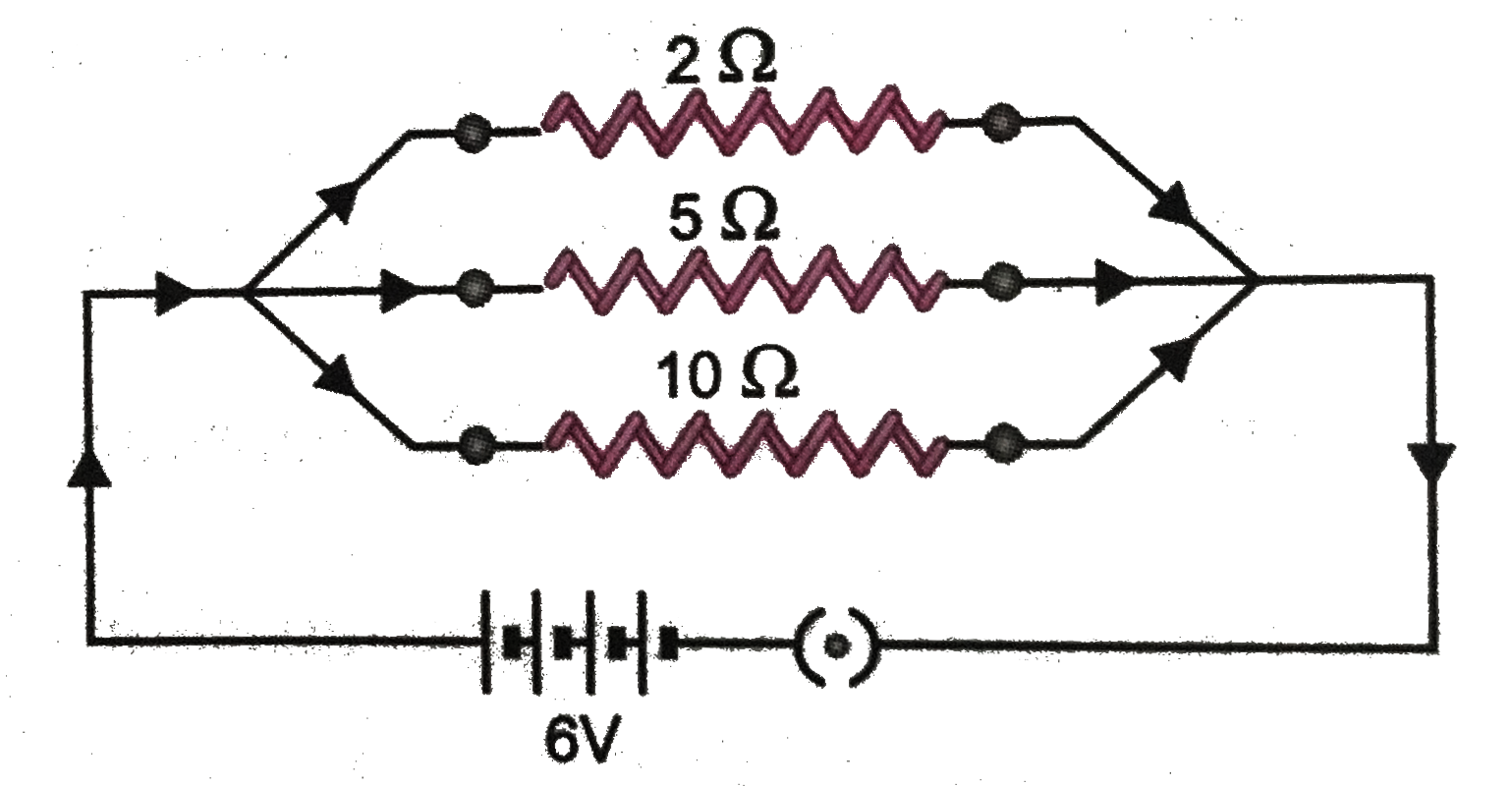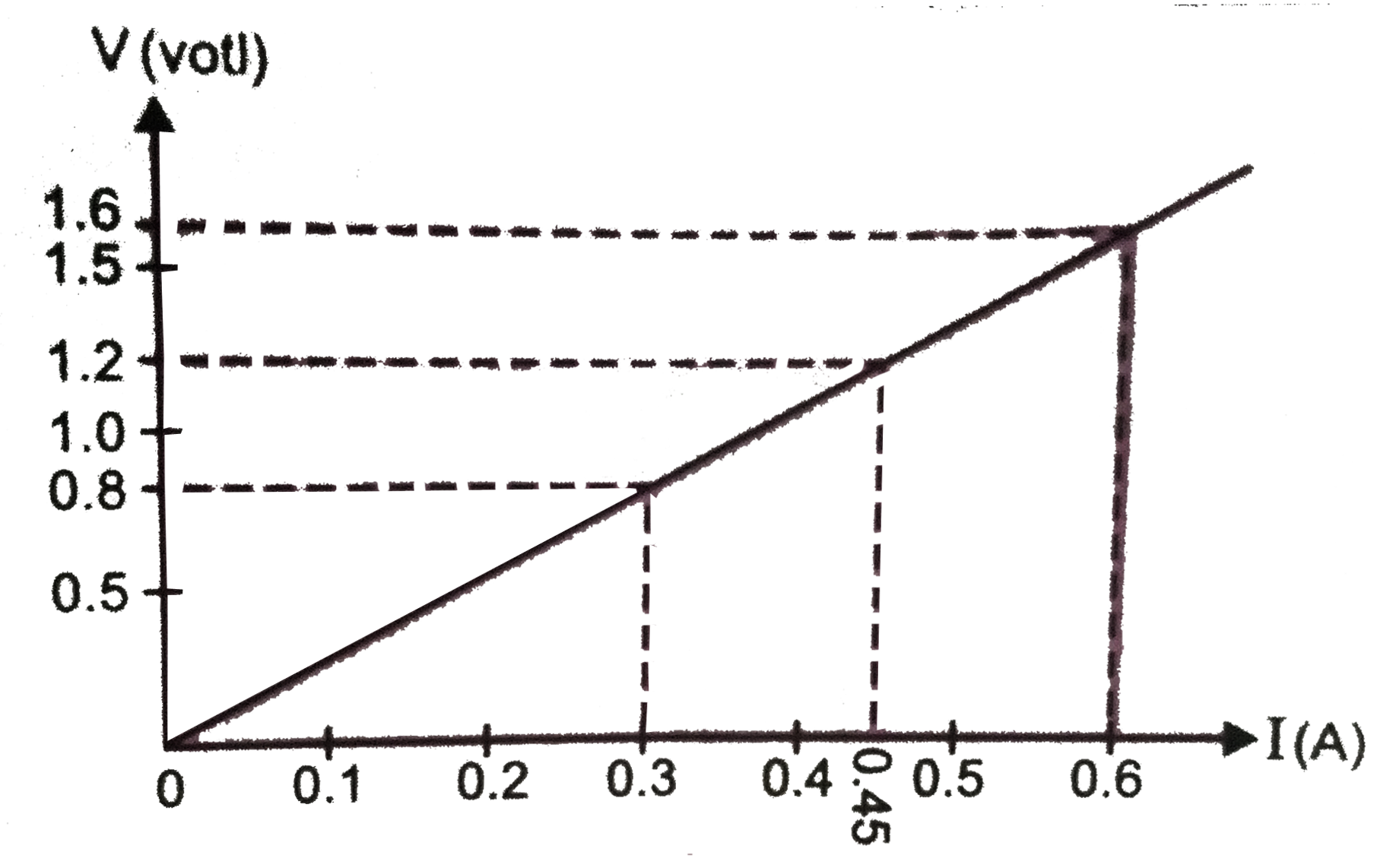Complete Solutions to (Mock Test)Sec -A of chapter ELECTRICITY of Class 10 book with complete answers and questions
| Class 10 | PHYSICS |
| Chapter | ELECTRICITY |
| PRADEEP | (Mock Test)Sec -A |
| Number Of Questions | 21 |
| Academic Year | 2023-24 |
There are two electric bulb :
(i) marked `60 W, 220 V` and
(ii) marked `100W, 220 V`
Which one of them has higher resistance ?
View SolutionOut of the two, a toaster of `1 kW` and an electric heater of `2 kW`, which has a greater resistance ?
View SolutionAn electric iron has a rating of `750 W, 220 V`. Calculate :
(i) current passing through it and
(ii) its resistance, when in use.
View SolutionA wire `1.0` m long, `0.2` mm in diameter, has a resistance of `10 Omega`. Calculate the resistivity of its material.
View SolutionWhat is an electric circuit ? Distinguish between an open and a closed circuit.
View SolutionDescribe two conducting materials which are meant for specific uses.
Describe briefly the phenomenon of heat production by an electric current ?
View SolutionDiscuss electric energy and electric power. Give their units.
View SolutionWhat do you mean by rating of an electric appliance ? Illustrate with an example.
View SolutionTwo metallic wires `A and B` (of the same material) are connected in parallel. Wire `A` has length `l` and radius `r` , wire `B` has a length `3 l` and radius `3 r`. Compute the ratio of the total resistance of parallel combination and the resistance of wire `A`.
View SolutionCalculate the equivalent resistance between the points `A and B` in the combination of resistors shown in (Fig. 3.56).
 .
.
View SolutionIf three resistors having resistances `2 Omega, 3 Omega and 5 Omega` are connected in parallel, then will the value of the total resistacne be less than `2 Omega`, or greater than `2 Omega` or lie between `2 Omega and 5 Omega` ? Explain.
View SolutionA piece of wire having resistance `R` is cut into four equal parts.
(i) How will the resistance of each part combination compare with the original wire ?
View SolutionA piece of wire of resistance `R` is redrawn by pulling it until its length is doubled. Compare the new resistance with the original value.
Two lamps , one rated 100 W at 220 V, and the other 60 W at 220 V, are connected in parallel to a 220 V supply. What is the current drawn from the supply line ?
View SolutionIn the circuit diagram given in (Fig. 3.57), calculate :
(a) the current through each resistor
(b) the total current in the circuit
( c) the total effective resistance of the circuit.
 .
.
View SolutionIf you were asked to think of electricity, many favourable and unfavourable images come to your mind.
(i) Name the favourable images.
(ii) What are the unfavourable images ?
(iii) What is common to all these images ?
View Solution(a) Why a bird perched on a high voltage wire is not killed by the current ?
(b) How many `176 Omega` resistors (in parallel) are required to carry a current of 5 A in 220 V line ?
View Solution(a) Water boils in an electric kettle in `15` minutes after being swiched on. Using the same mains supply, should the length of the heating element be increased or decreased if the water is to boiled in `10` minutes ? Why ?
Does Ohm's law hold good under all conditions ?
View Solution(a) What is meant by saying that the potential difference two points is `1` volt ? Name a device that helps to measure the potential difference across a conductor.
(b) Why does the connecting cord of an electric heater not glow hot while the heating element does ?
( c) Electrical resistivities of some substances at `20^@ C` are given below :
Silver `1.60 xx 10^-8 Omega m`
Copper `1.62 xx 10^-8 Omega m`
Tungsten `5.20 xx 10^-8 Omega m`
Iron `10.0 xx 10^-8 Omega m`
Mercury `94.0 xx 10^-8 Omega m`
Nichrome `100 xx 10^-6 Omega m`.
Answer the following question in relation to them :
(i) Among silver and copper, which one is a better conductor ? Why ?
(ii) Which material would you advise to be used in electrical heating devices ? Why ?
View Solution(a) Name an instrument that measures electric current in a curcuit. Define the unit of eletric current.
(b) What do the following symbols, (Fig. 3.58) mean in a circuit diagram ?
( c) An electric circuit consisting of a `0.5 m` long nichrome wire `XY`, an ammeter, a voltmeter, four cells of `1.5 V` each and a plug key was set up.
(i) Draw a diagram of this electric circuit to study the relation between the potential difference maintained between the points 'X' and 'Y' and the electric current flowing through `XY`.
(ii) Graph shown in (Fig. 3.59) was plotted `V and I` values.
What would be the values of `v//I` ratios when the potential differences are `0.8 V, 1.2 V and 1.6 V` respectively ? What conclusion do you draw from these values ?
 ,
,
 .
.
View SolutionYou are making a snack for you some friends to help0 you get ready for a full night of studing. You decide that coffee, toast and popcorn would be a good start. You turn on the toaster (900 W), place some popcorn in the microwave (1200 W), and turn it on. Because your apartment is an older building, the fuse (10 A rating) may blow when you turn on too many appliances at `220 V`.
(i) Should you suggest the coffeemaker (600 W) ?
(ii) Check the answer to part (i).
(iii) If not, suggest an alternative to start the coffeemaker.
(iv) Which human quality corresponds to blowing of the fuse ?
View SolutionThree incandescent bulbs of `100 W` each are connected in series in an electric circuit. In another circuit, another set of three bulbs of the same wattage are connected in parallel to the same source.
(a) Will the bulbs in the two circuits glow with the same brightness ? Justify your answer.
(b) Now let one bulb in both circuits get fused. Will the rest of the bulbs continue to glow in each circuit ? Give reason.
(a) In a household electric circuits, different appliances are connected in parallel to one another. Give two reasons for the same.
(b) An electrican puts a fuse of rating `5 A` in that part of domestic electrical circuit in which electrical heater of rating `1.5 kW, 220 V` is operating. What iis likely to happen in this case and why ? What change, if any, needs to be made ?
View Solution
(Mock Test)Sec -A questions and complete solutions for chapter ELECTRICITY of PRADEEP PHYSICS (HINGLISH) of Class 10
All Exercises from PRADEEP Class 10 PHYSICS ELECTRICITY
- (Additional)Long Answer
- (Additional)Short Answer
- (Additional)Very Short Answer
- (Exemplar)Long Answer
- (Exemplar)Multiple Choice
- (Exemplar)Short Answer
- (Mock Test)Sec - B
- (Mock Test)Sec -A
- Based On Practical
- Higher Order Thinking
- NCERT Exercise
- NCERT Question
- Problem For Practice
- Solved problem
- Value Based Question